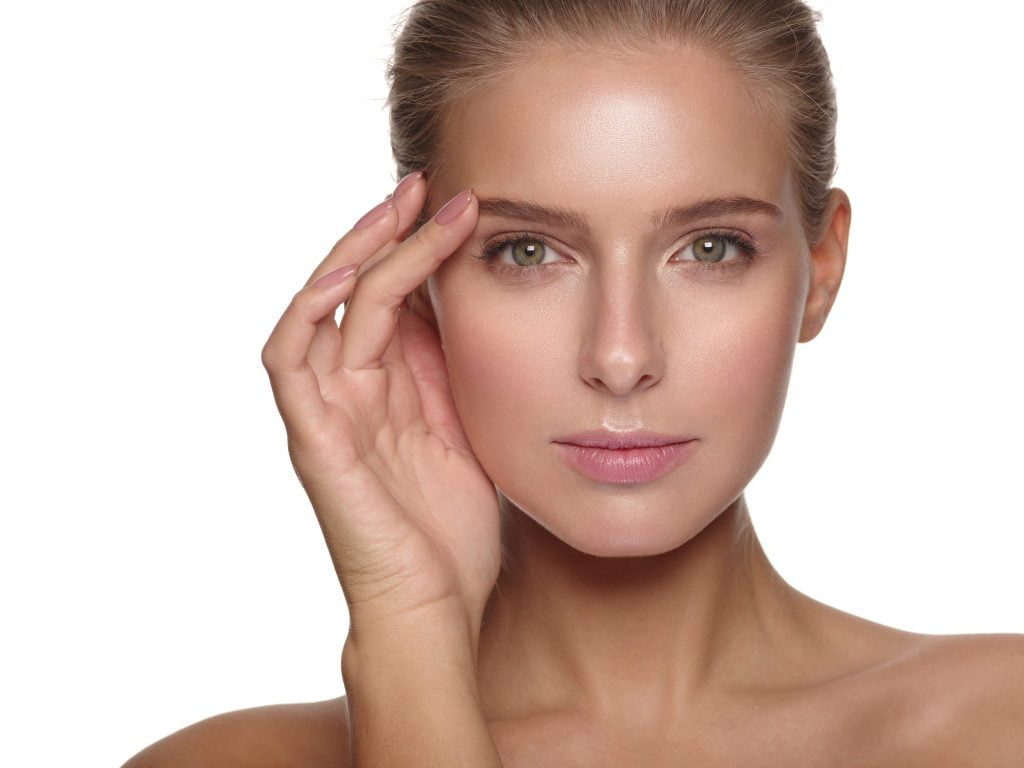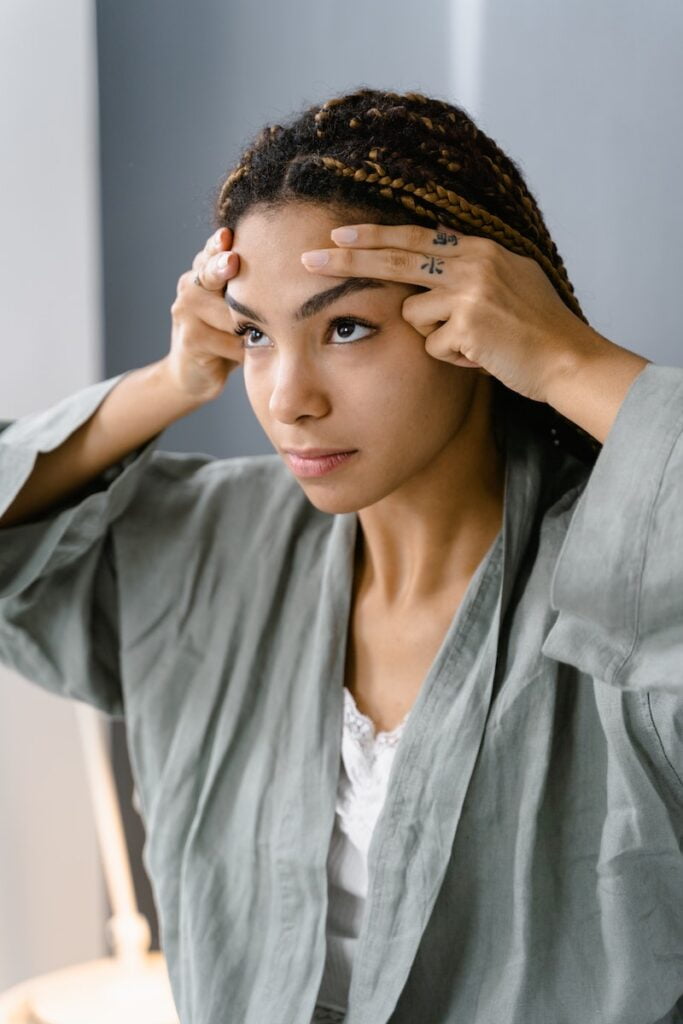Do you feel self-conscious about having a large forehead or a high hairline? Do you wish you could have a more balanced and harmonious facial appearance? If so, you might be interested in hairline lowering, a cosmetic procedure that can reduce the height of your forehead and bring your hairline closer to your eyebrows.
Hairline lowering, also known as forehead reduction or scalp advancement, is a surgical technique that involves removing a strip of skin from the upper forehead and pulling the scalp down to create a lower hairline. This procedure can improve the proportions of your face and give you a more youthful and feminine look.
In this article, we will explain everything you need to know about hairline lowering, including:
- What are the benefits and risks of hairline lowering?
- Who is a good candidate for hairline lowering?
- How is hairline lowering performed?
- What is the recovery process like after hairline lowering?
- How much does hairline lowering cost?
- What are some alternatives to hairline lowering?
By the end of this article, you will have a better understanding of what hairline lowering can do for you and whether it is the right option for your aesthetic goals.

Table of Contents
Benefits and Risks of Hairline Lowering
Hairline lowering can offer several benefits for people who are unhappy with their large forehead or high hairline. Some of these benefits are:
- It can lower your hairline by up to 3 cm (1.2 inches) in one session, depending on your scalp laxity and hair density.
- It can create a more symmetrical and proportionate facial appearance, enhancing your overall attractiveness and self-confidence.
- It can eliminate or reduce the appearance of widow’s peaks, cowlicks, or receding temples, giving you a more even and natural-looking hairline.
- It can provide immediate and permanent results, unlike other methods such as hair transplantation or medication.
- It can preserve your existing hair follicles and nerves, preventing hair loss or numbness in the treated area.
- It can hide the scar within your hairline, making it virtually invisible after healing.
However, like any surgical procedure, hairline lowering also carries some risks and potential complications. Some of these risks are:
- Infection, bleeding, swelling, bruising, or pain at the incision site
- Scarring, keloid formation, or poor wound healing
- Hair loss or thinning along the incision line or in the surrounding area
- Asymmetry, irregularity, or unnatural appearance of the hairline
- Nerve damage, numbness, or tingling in the forehead or scalp
- Tension headache, migraine, or scalp tightness
- Need for revision surgery or additional procedures
To minimize these risks, it is important to choose a qualified and experienced plastic surgeon who specializes in hairline lowering. You should also follow your surgeon’s pre-operative and post-operative instructions carefully and report any signs of infection or complications promptly.

Candidacy for Hairline Lowering
Hairline lowering is suitable for both men and women who have a large forehead or a high hairline that makes them feel insecure about their appearance. However, not everyone is a good candidate for this procedure. Some factors that may affect your eligibility for hairline lowering are:
- Your scalp laxity: This refers to how stretchy and flexible your scalp is. The more laxity you have, the more your scalp can be moved down without creating too much tension or distortion. Ideally, you should be able to pull your scalp down by at least 2 cm (0.8 inches) without feeling any discomfort.
- Your hair density: This refers to how thick and full your hair is. The more density you have, the better your results will be. A dense hairline will help conceal the scar and create a natural-looking transition between your forehead and your scalp. If you have thinning hair or bald spots, you may not be able to achieve optimal results with hairline lowering.
- Your age: This refers to how old you are and how likely you are to experience further hair loss in the future. Hairline lowering is best performed on younger patients who have stable hair growth patterns and minimal signs of aging. If you are older or have a family history of baldness, you may want to consider other options such as hair transplantation or medication.
- Your expectations: This refers to how realistic and reasonable your goals are regarding the outcome of the procedure. Hairline lowering can significantly improve your facial harmony and self-esteem, but it cannot change your entire appearance or personality. You should have a clear idea of what you want to achieve and discuss it with your surgeon before undergoing surgery.
To determine if you are a good candidate for hairline lowering, you should consult with a board-certified plastic surgeon who has extensive experience in this procedure. Your surgeon will evaluate your medical history, examine your scalp and forehead, measure your forehead height and width, assess your scalp laxity and hair density, and recommend the best course of action for you.
Procedure for Hairline Lowering
Hairline lowering is usually performed as an outpatient procedure under general anesthesia or local anesthesia with sedation. The surgery typically takes about 1 to 2 hours, depending on the extent of correction and the technique used. The most common technique for hairline lowering is the pretrichial incision, which involves making a curved incision along the natural hairline and removing a strip of skin from the upper forehead. The steps of this technique are:
- The surgeon marks the incision line and the amount of skin to be removed on your forehead, taking into account your facial proportions, hairline shape, and desired results.
- The surgeon administers anesthesia and numbs your forehead and scalp with a local anesthetic injection.
- The surgeon makes a pretrichial incision along your hairline, following the natural contours of your forehead. The incision is designed to preserve your hair follicles and nerves and to create a fine scar that will be hidden by your hair.
- The surgeon carefully lifts the skin from the underlying tissues and cuts out the excess skin from the upper forehead. The surgeon may also remove some fat or muscle from the forehead to create a smoother appearance.
- The surgeon pulls down the scalp and aligns it with the lower edge of the incision, closing the gap and lowering your hairline. The surgeon may use sutures, staples, or clips to secure the scalp in place.
- The surgeon closes the incision with absorbable or non-absorbable sutures, creating a zigzag pattern that will blend with your hairline. The surgeon may also apply a surgical glue or tape to protect the wound and promote healing.
- The surgeon covers the incision with a sterile dressing and wraps your head with a bandage to reduce swelling and bleeding.
Recovery After Hairline Lowering
After hairline lowering surgery, you will be monitored in a recovery room for a few hours before being discharged home. You will need someone to drive you home and stay with you for the first night. You will also receive specific instructions from your surgeon on how to care for your incision, manage your pain, prevent infection, and resume your normal activities. Some general guidelines for recovery are:
- Keep your head elevated and avoid bending or straining for the first few days after surgery. This will help reduce swelling, bleeding, and pressure on your scalp.
- Apply cold compresses or ice packs to your forehead and scalp for 10 to 15 minutes at a time, several times a day for the first 48 hours after surgery. This will help ease pain, inflammation, and bruising.
- Take painkillers as prescribed by your surgeon or over-the-counter medications such as acetaminophen or ibuprofen. Avoid aspirin or other blood thinners that may increase bleeding or interfere with healing.
- Clean your incision gently with mild soap and water once or twice a day, as instructed by your surgeon. Pat it dry with a clean towel and apply an antibiotic ointment if recommended by your surgeon.
- Avoid washing or styling your hair for at least 3 days after surgery. When you do wash your hair, use a gentle shampoo and conditioner and rinse thoroughly with lukewarm water. Avoid using hot water, blow dryers, curling irons, or other heat sources that may damage your scalp or hair.
- Avoid wearing hats, headbands, helmets, or other tight-fitting accessories that may rub against your incision or put pressure on your scalp for at least 2 weeks after surgery.
- Avoid exposing your incision to direct sunlight, tanning beds, or other sources of ultraviolet radiation for at least 6 months after surgery. Use sunscreen with SPF 30 or higher and wear a hat or scarf when going outdoors. This will help prevent hyperpigmentation or hypopigmentation of your scar.
- Avoid smoking, drinking alcohol, or using drugs that may impair your healing or increase your risk of complications for at least 4 weeks after surgery.
- Follow a healthy diet that is rich in protein, vitamins, minerals, and antioxidants that will support your healing and immune system. Drink plenty of water to stay hydrated and flush out toxins from your body.
- Resume your normal activities gradually as you feel comfortable and as advised by your surgeon. You should be able to return to work or school within a week after surgery, depending on the nature of your job or studies. You should avoid strenuous exercise or sports for at least 4 weeks after surgery.
You will need to visit your surgeon for follow-up appointments at regular intervals after surgery. Your surgeon will check your incision, remove any sutures or staples if needed, monitor your healing progress, and address any concerns you may have. You should also report any signs of infection, bleeding, abnormal swelling, severe pain, numbness, tingling, or hair loss to your surgeon immediately.
Cost of Hairline Lowering
More than one factor can affect average costs. These could be:
- The surgeon’s experience and reputation: A more skilled and renowned surgeon may charge more for their services, but they may also offer better results and lower risks of complications.
- The geographic location: The cost of living and the demand for cosmetic surgery may affect the price of hairline lowering in different regions or countries.
- The extent of correction: The amount of skin to be removed and the degree of scalp advancement may influence the complexity and duration of the surgery, which may affect the cost.
- The technique used: The pretrichial incision is the most common technique for hairline lowering, but there are other options such as the trichophytic incision, the hair grafting technique, or the tissue expander technique, which may have different costs and outcomes.
- The anesthesia type: General anesthesia or local anesthesia with sedation may have different costs and risks associated with them.
- The additional procedures: Some patients may choose to combine hairline lowering with other cosmetic procedures such as brow lift, eyelid surgery, or facelift, which may increase the overall cost of the surgery.
According to RealSelf, a website that provides information and reviews on cosmetic procedures, the average cost of hairline lowering in the United States is $7,900, ranging from $3,000 to $15,000. However, this is only an estimate based on self-reported data from users and does not include other expenses such as consultation fees, anesthesia fees, facility fees, medication costs, or post-operative care costs. Therefore, the actual cost of hairline lowering may vary significantly depending on your individual case and your surgeon’s fees.
To get a more accurate quote for hairline lowering, you should consult with a board-certified plastic surgeon who specializes in this procedure. Your surgeon will provide you with a personalized treatment plan and a detailed breakdown of the costs involved. You should also ask your surgeon about the financing options and payment plans that they offer or accept.
Alternatives to Hairline Lowering
Hairline lowering is not the only option for people who want to reduce their forehead size or lower their hairline. There are some alternatives that may be more suitable for some patients depending on their preferences, goals, and circumstances. Some of these alternatives are:
- Hair transplantation: This is a procedure that involves harvesting hair follicles from one part of the scalp (usually the back or sides) and transplanting them to another part (usually the front or top). This can create a fuller and lower hairline by adding more density and coverage to the forehead area. Hair transplantation can be performed using different techniques such as follicular unit extraction (FUE) or follicular unit transplantation (FUT), which have different advantages and disadvantages. Hair transplantation can be combined with hairline lowering to achieve optimal results.
- Medication: This is a non-surgical option that involves taking oral or topical drugs that can stimulate hair growth or prevent hair loss. Some examples of these drugs are minoxidil (Rogaine), finasteride (Propecia), or dutasteride (Avodart). These drugs can help lower your hairline by increasing your hair density and slowing down your hair recession. However, these drugs may have side effects such as scalp irritation, sexual dysfunction, or hormonal imbalance. They also require continuous use to maintain their effects.
- Makeup: This is a temporary and non-invasive option that involves using cosmetic products such as eyeshadow, eyeliner, or concealer to create an illusion of a lower hairline. This can help camouflage your large forehead or high hairline by filling in the gaps or creating shadows along your hairline. Makeup can be applied in different ways depending on your desired look and skill level. However, makeup can be easily washed off or smudged by sweat, water, or oil. It also requires frequent application and removal to avoid skin irritation or infection.
Conclusion
Hairline lowering is a cosmetic procedure that can reduce the height of your forehead and lower your hairline by removing a strip of skin from the upper forehead and pulling down the scalp. This can improve your facial proportions and harmony and boost your self-confidence and attractiveness. Hairline lowering can offer several benefits such as immediate and permanent results, preservation of hair follicles and nerves, and concealment of scars. However, it also carries some risks such as infection, bleeding, scarring, nerve damage, headache, or need for revision surgery.
To determine if you are a good candidate for hairline lowering, you should consult with a board-certified plastic surgeon who has extensive experience in this procedure. Your surgeon will evaluate your scalp laxity, hair density, age, expectations, and other factors that may affect your eligibility and outcome. Your surgeon will also explain the procedure details, recovery process, cost factors, and alternative options that are available for you.
Hairline lowering is not the only option for people who want to change their forehead size or shape. There are some alternatives such as hair transplantation, medication, or makeup that may be more suitable for some patients. You should weigh the pros and cons of each option and choose the one that best meets your needs and goals.
FAQs
Here are some frequently asked questions about hairline lowering:
- Q: How long does it take to see the final results of hairline lowering?
- A: You will see an immediate improvement in your hairline position and forehead size after hairline lowering. However, it may take several months for the swelling, bruising, and scarring to subside and for the hairline to settle into its final shape. You should expect to see the final results of hairline lowering within 6 to 12 months after surgery.
- Q: How long does the scar from hairline lowering last?
- A: The scar from hairline lowering is usually very fine and well-hidden within your hairline. However, the visibility and duration of the scar may vary depending on your skin type, healing ability, hair density, and hair style. The scar may fade over time with proper care and sun protection, but it may never disappear completely. Some patients may benefit from scar revision or camouflage techniques such as laser therapy, micropigmentation, or microblading to improve the appearance of the scar.
- Q: Can I wear bangs or fringe after hairline lowering?
- A: Yes, you can wear bangs or fringe after hairline lowering. In fact, some patients may prefer to wear bangs or fringe to cover their incision or scar during the healing process. However, you should avoid cutting or styling your bangs or fringe too short or too tight, as this may pull on your scalp or expose your incision or scar. You should also avoid using harsh chemicals or heat tools on your bangs or fringe, as this may damage your scalp or hair.
- Q: Can I dye my hair after hairline lowering?
- A: Yes, you can dye your hair after hairline lowering. However, you should wait at least 4 weeks after surgery before coloring your hair, as this will allow your incision to heal properly and prevent infection or irritation. You should also use a gentle and natural dye that does not contain ammonia, peroxide, or other harsh ingredients that may harm your scalp or hair.
- Q: Can I have a second hairline lowering surgery if I am not satisfied with the first one?
- A: Yes, you can have a second hairline lowering surgery if you are not satisfied with the first one. However, you should wait at least 6 months after the first surgery before undergoing a second one, as this will allow your scalp to heal fully and regain its laxity and elasticity. You should also discuss your expectations and goals with your surgeon and understand the limitations and risks of having a second surgery.








